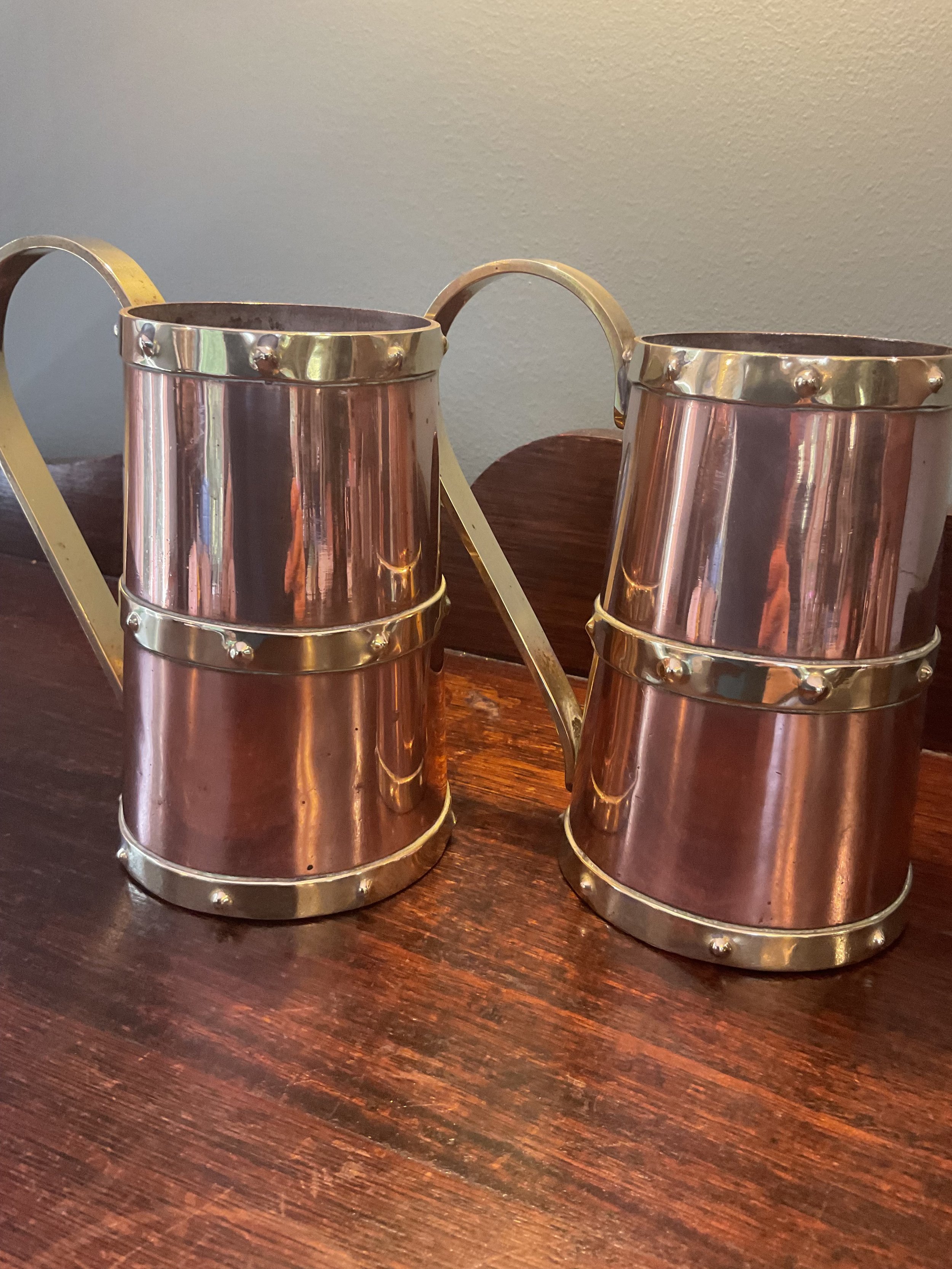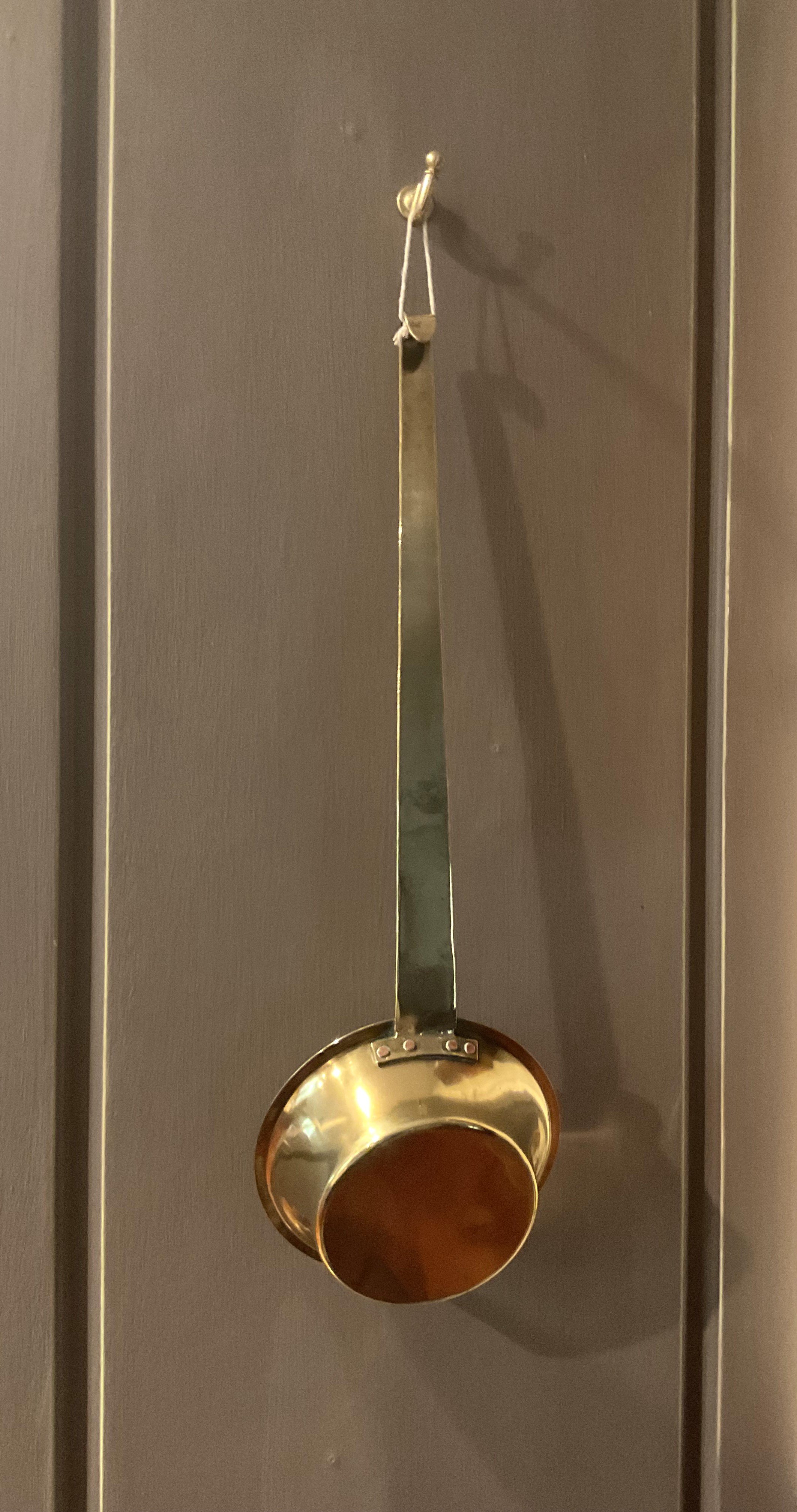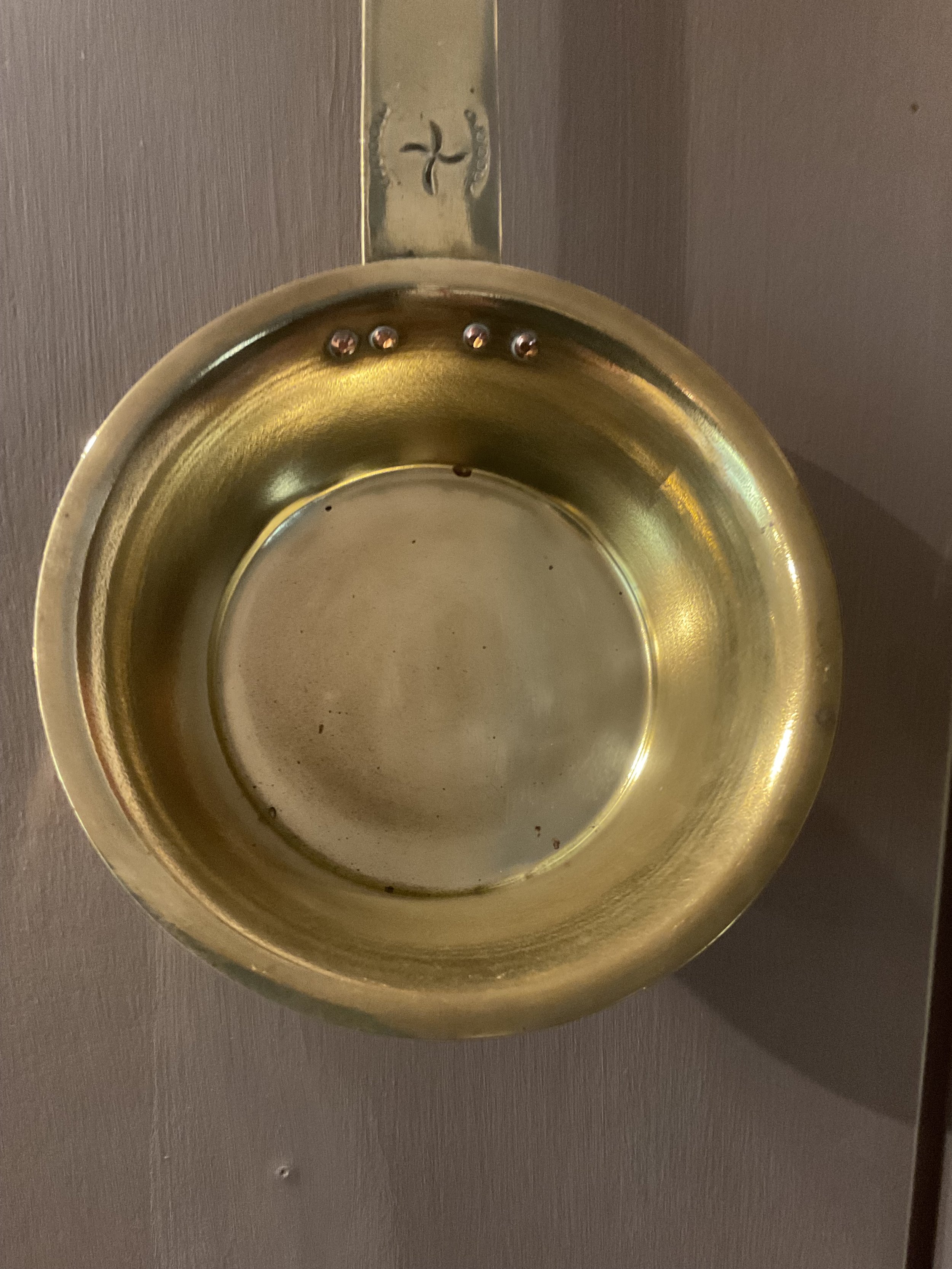 Image 1 of 7
Image 1 of 7

 Image 2 of 7
Image 2 of 7

 Image 3 of 7
Image 3 of 7

 Image 4 of 7
Image 4 of 7

 Image 5 of 7
Image 5 of 7

 Image 6 of 7
Image 6 of 7

 Image 7 of 7
Image 7 of 7








Splendid French Antique Ink Blotter
A rare find. This rocker ink blotter dates back to the 1800’s. It has a wooden base with an ornate Repousse top made from brass. The handle features a sun flower design set atop a floral, ribbon twist decoration. As an added bonus, the base still has some remanants of blotting paper. On the wooden base there is a markers mark stamped ‘BRUGES’
Before the introduction of blotters, salt was commonly used to sprinkle onto the newly written text to speed up the drying process. In the early 1800’s, a hand-held rocking device with blotting paper attached was used to absorb excess ink. These were often made of wood, stone, metal, porcelain, glass or brass. These devices featured a small handle, a curved base and felt over the bottom. This was rocked over the ink text to remove excess ink. By the mid 1800’s, blotting paper replaced the felt. Blotting paper was thick and textured. It was manufactured on special paper machines. Made from absorbent materials such as cotton, flax seed and rice, it aided in soaking up ink and speeding up the drying process.
Eventually the inconvenience of continually dipping a quill or a pen into a well of ink led to the development of the fountain pen towards the end of the 19th century. This was a type of pen that housed a reservoir of ink built into the pen that passed through to the writing nib, via small channels.
This unique ink blotter would be an exciting aquisition either as a gift, or for a little bit of self indulgence. This fine peice of history would look stunning atop an antique desk. It stands approximately 8 cms in height and it is 14 cms in length.
A rare find. This rocker ink blotter dates back to the 1800’s. It has a wooden base with an ornate Repousse top made from brass. The handle features a sun flower design set atop a floral, ribbon twist decoration. As an added bonus, the base still has some remanants of blotting paper. On the wooden base there is a markers mark stamped ‘BRUGES’
Before the introduction of blotters, salt was commonly used to sprinkle onto the newly written text to speed up the drying process. In the early 1800’s, a hand-held rocking device with blotting paper attached was used to absorb excess ink. These were often made of wood, stone, metal, porcelain, glass or brass. These devices featured a small handle, a curved base and felt over the bottom. This was rocked over the ink text to remove excess ink. By the mid 1800’s, blotting paper replaced the felt. Blotting paper was thick and textured. It was manufactured on special paper machines. Made from absorbent materials such as cotton, flax seed and rice, it aided in soaking up ink and speeding up the drying process.
Eventually the inconvenience of continually dipping a quill or a pen into a well of ink led to the development of the fountain pen towards the end of the 19th century. This was a type of pen that housed a reservoir of ink built into the pen that passed through to the writing nib, via small channels.
This unique ink blotter would be an exciting aquisition either as a gift, or for a little bit of self indulgence. This fine peice of history would look stunning atop an antique desk. It stands approximately 8 cms in height and it is 14 cms in length.


































